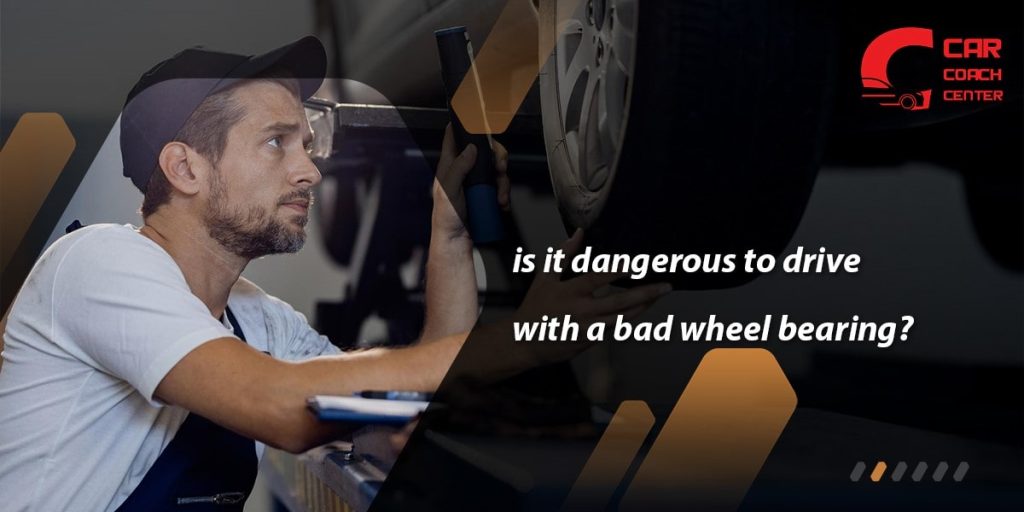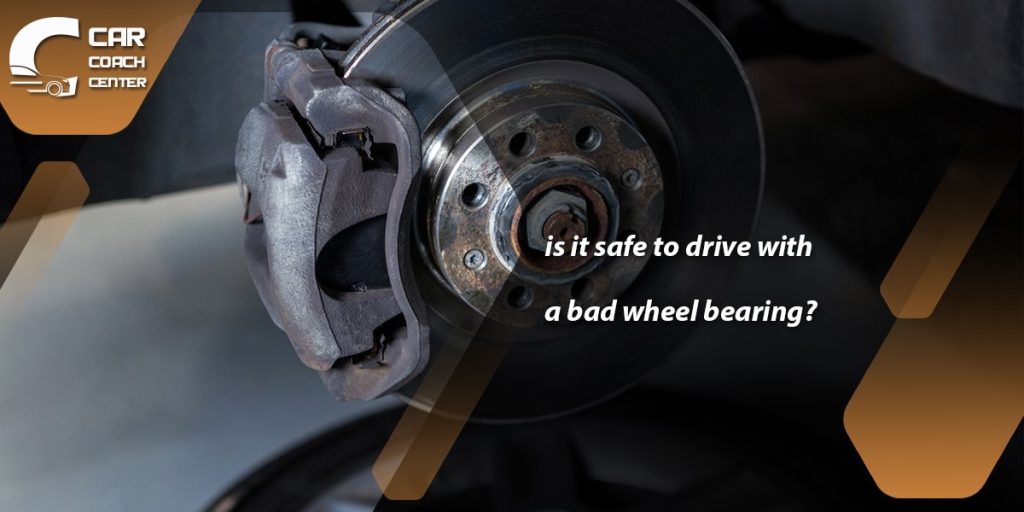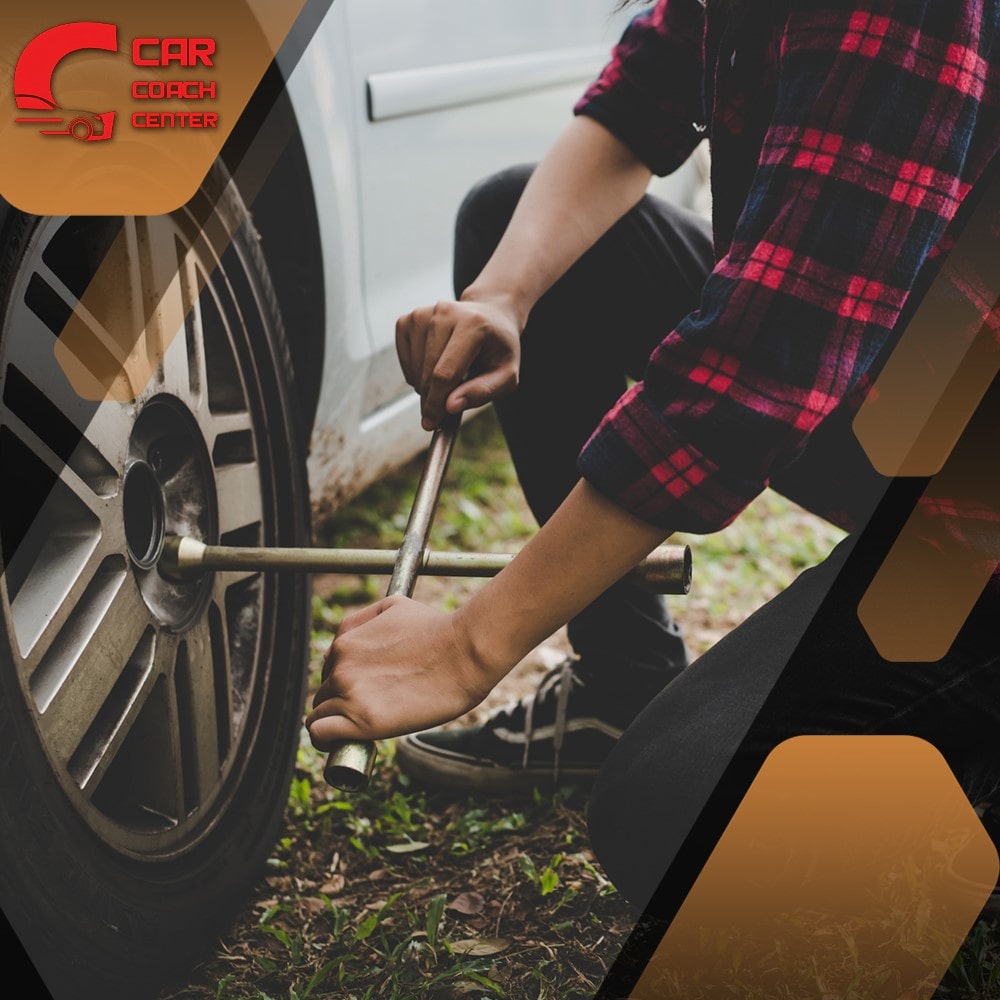Can You Drive With A Bad Wheel Bearing
Driving a vehicle with a bad wheel bearing is a topic that demands attention from any car owner. Wheel bearings play a crucial role in the smooth operation of a vehicle’s wheels, facilitating their rotation while enduring substantial loads and providing stability.
However, these bearings can wear out or become damaged over time, leading to potential safety risks and compromised driving performance. In this article, we delve into whether driving with a bad wheel bearing is safe, exploring the consequences, signs of failure, and potential risks associated with ignoring this issue.

Additionally, we will provide valuable insights into evaluating wheel bearings, driving precautions to minimize risks, and the available repair options. By understanding the implications of driving with a faulty wheel bearing, you can make informed decisions to safeguard your safety, vehicle performance, and the longevity of your wheels. Let’s embark on this journey of knowledge and ensure we’re equipped with the necessary understanding to tackle this common automotive challenge.
The Telltale Signs: How to Identify a Failing Wheel Bearing
Recognizing the signs of a failing wheel bearing is crucial for every car owner. While each vehicle may exhibit slightly different symptoms, there are some common telltale signs to look out for. One of the most noticeable indications of a bad wheel bearing is an unusual noise from the affected wheel.
It may manifest as a grinding, humming, or growling sound that increases with vehicle speed. Pay attention to whether the noise changes when turning, as this can help pinpoint the problematic wheel bearing.
Another key sign is vibrations felt through the steering wheel or the entire vehicle. Faulty wheel bearings can cause vibrations that become more pronounced as speed increases. These vibrations often intensify when making turns or maneuvering the vehicle.
Steering responsiveness may also be affected by a failing wheel bearing. If you notice a loose or unstable feeling in the steering, particularly during cornering or at higher speeds, it could indicate a problem with the wheel bearing.
Inspecting the affected wheel visually can provide additional clues. Look for any excessive play or looseness in the wheel when you attempt to wiggle it. Uneven tire wear, such as wearing on one side or in patches, may also suggest a faulty bearing.
Lastly, pay attention to changes in fuel efficiency. A damaged wheel bearing can increase rolling resistance, causing the engine to work harder and reducing gas mileage.
The Risks Unveiled: What Happens If You Ignore a Bad Wheel Bearing?
Ignoring a bad wheel bearing can have serious consequences for your vehicle and your safety. Here are some of the risks associated with neglecting this crucial issue.
Increased Safety Hazards
A failing wheel bearing compromises the stability and control of your vehicle. As the bearing deteriorates, it can lead to unpredictable handling, especially during turns or sudden maneuvers. This instability increases the risk of accidents, particularly at higher speeds or emergencies.
Wheel Damage
A bad wheel bearing places excessive stress on the wheel hub, axle, and surrounding components. Over time, this can lead to damage such as warping, bending, or even complete wheel detachment. Such failures pose a significant safety hazard and result in costly repairs or replacements.
Drivetrain Strain
Faulty wheel bearings strain the drivetrain components, including the transmission, differential, and axles. This strain can cause premature wear and tear, leading to expensive repairs or replacements.
Uneven Tire Wear
When a wheel bearing fails, it can cause uneven weight distribution on the affected wheel. This, in turn, leads to irregular tire wear patterns. Uneven tire wear not only compromises vehicle performance but also reduces the lifespan of your tires, requiring premature replacements.
Higher Repair Costs
Ignoring a bad wheel bearing can lead to more extensive damage over time. If addressed promptly, what could have been a relatively simple repair may escalate into a more complex and expensive repair job involving additional components.
The DIY Evaluation: Can You Check Your Wheel Bearings Yourself?
While it is always recommended to have a qualified mechanic inspect and address issues with your vehicle’s wheel bearings, you can take some basic steps to perform a preliminary evaluation yourself. Remember that these steps are not a substitute for professional diagnosis but can provide initial insights into the condition of your wheel bearings.
Find a Safe Location
Park your vehicle on a level surface and engage the parking brake. Before proceeding, ensure the car is in the park or gear (for manual transmissions).
Listen for Unusual Noises
Start by taking a short drive at varying speeds, paying close attention to any unusual noises. If you hear grinding, humming, or growling sounds that increase with speed, it may indicate a bad wheel bearing.
Test for Vibration
While driving, take note of any vibrations felt through the steering wheel or the vehicle itself. If you experience pronounced vibrations, especially during turns, could be a sign of a failing wheel bearing.
Conduct a Visual Inspection
With the vehicle parked, visually inspect the wheels for any visible signs of damage or looseness. Check for play in the wheel by attempting to wiggle it back and forth. Excessive play may suggest a worn or damaged wheel bearing.
Monitor Tire Wear
Uneven tire wear can indicate a bad wheel bearing. Look for patterns of wear, such as wearing on one side or in patches, which may point to an issue with the bearing.

Safe Driving Tips: How to Minimize Risks with a Bad Wheel Bearing
Driving with a bad wheel bearing can be a temporary situation you might find yourself in due to unforeseen circumstances. While it is essential to address the issue promptly, here are some safe driving tips to help minimize risks while you navigate with a compromised wheel bearing:
Reduce Speed and Avoid Aggressive Maneuvers
Slowing down and driving at a moderate speed can help minimize stress on the faulty wheel bearing. Avoid sudden accelerations, hard braking, and aggressive turns, as these actions can exacerbate the problem and compromise vehicle stability.
Maintain a Safe Following Distance
Increase the distance between your vehicle and the one in front. This precaution allows for additional reaction time and minimizes the need for sudden braking, which can strain the wheel bearing further.
Be Mindful of Road Conditions
Uneven surfaces, potholes, and bumps can put additional stress on a bad wheel bearing. Stay vigilant and try to avoid roads with poor conditions whenever possible. If unavoidable, slow down to reduce the impact on the bearing.
Limit Long-Distance Travel
If you are aware of a bad wheel bearing, it is advisable to limit long-distance or extended trips until the issue is addressed. This reduces the chances of encountering problems far from home and helps prevent potential breakdowns.
Regularly Monitor Vehicle Performance
Stay attuned to any vehicle behavior changes. Pay attention to increased noise, vibrations, or steering instability. Promptly address any new or worsening symptoms by seeking professional assistance.
Get Professional Help
Remember that these safe driving tips are temporary measures, and the ultimate solution is to have the bad wheel bearing repaired or replaced by a qualified mechanic. Driving with a faulty bearing for an extended period increases the risks and potential damage to other components.

Repair or Replace? The Best Course of Action for a Bad Wheel Bearing
When faced with a bad wheel bearing, one of the key decisions you’ll need to make is whether to repair or replace it. Several factors come into play when determining the best course of action:
Severity of Damage
The extent of the damage to the wheel bearing is a crucial consideration. If the bearing has minor wear or damage, replace worn components or repack it with fresh grease. However, replacement is often recommended if the damage is significant or the bearing is completely worn out.
Age and Mileage
The age and mileage of the vehicle can influence the decision. If your vehicle is relatively new or has low mileage, repairing the wheel bearing may be viable. However, replacing the bearing is often more cost-effective if your vehicle is older or has high mileage, as it ensures a longer-term solution and reduces the risk of further complications.
Cost Comparison
Consider the cost of repair versus replacement. In some cases, repairing a severely damaged wheel bearing can be close to or even exceed the cost of a new bearing. Assess the overall expenses, including labor costs, associated with each option to make an informed decision.
Comprehensive Inspection
A thorough inspection by a qualified mechanic is crucial in determining the true condition of the wheel bearing and identifying any additional damage or underlying issues. Their expertise will help guide you toward the most appropriate solution.
Future Reliability
Consider the long-term reliability and peace of mind when deciding between repair and replacement. A brand-new wheel bearing offers the advantage of a fresh, reliable component with a longer lifespan, reducing the chances of future breakdowns or further damage to the surrounding parts.
Preventive Maintenance: Extending the Life of Your Wheel Bearings
Taking proactive measures to extend the lifespan of your wheel bearings can save you from costly repairs and ensure optimal performance. Here are some preventive maintenance tips to help you maintain healthy wheel bearings:
Regular Inspections
Make it a habit to inspect your wheel bearings during routine vehicle maintenance. Look for signs of wear, looseness, or damage. If you notice any issues, have them addressed promptly by a professional mechanic.
Keep Bearings Clean and Properly Lubricated
Adequate lubrication is crucial for the smooth operation of wheel bearings. Follow the manufacturer’s recommendations for lubrication intervals and use the appropriate type of high-quality grease. Regularly clean the bearings and repack them with fresh grease when necessary.

Monitor Wheel Alignment
Proper wheel alignment reduces stress on the wheel bearings. Misaligned wheels can cause excessive wear and strain on the bearings. Have your wheel alignment checked regularly and corrected if needed.
Avoid Excessive Loads and Overloading
Overloading your vehicle or placing excessive weight on it can strain the wheel bearings. Respect the load limits specified by the manufacturer and distribute weight evenly throughout the vehicle.
Drive Responsibly
Your driving habits can impact the lifespan of your wheel bearings. Avoid harsh acceleration, abrupt braking, and aggressive turns, as these actions stress the bearings unnecessarily. Drive smoothly and maintain a moderate speed to minimize wear.
Address Other Suspension and Steering Issues
Problems with the suspension or steering components can affect wheel bearings. Promptly address any issues, such as worn-out shocks, struts, or ball joints, to prevent additional stress on the bearings.
Follow Maintenance Schedule
Adhere to the recommended maintenance schedule outlined in your vehicle’s owner manual. Regular servicing, including tire rotations and inspections, can help identify and address potential wheel bearing issues before they become severe.
Conclusion
In conclusion, understanding the implications of driving with a bad wheel bearing is crucial for maintaining both your vehicle’s safety and longevity. By recognizing the telltale signs of a failing wheel bearing, you can take proactive measures to address the issue promptly.
Neglecting a bad wheel bearing can lead to increased safety hazards, wheel damage, drivetrain strain, uneven tire wear, and higher repair costs. While some initial evaluation can be done on your own, it is essential to consult a qualified mechanic for a comprehensive assessment and appropriate repairs or replacements.
CarCouchCenter.com provides valuable resources and expert guidance to help you navigate the complexities of wheel bearing maintenance and make informed decisions about repair or replacement. By prioritizing regular inspections, proper lubrication, safe driving practices, and adherence to maintenance schedules, you can extend the life of your wheel bearings, ensuring a smooth and secure driving experience. Invest in the care of your wheel bearings today to avoid costly repairs and enjoy a reliable vehicle tomorrow.
Can I drive with a bad wheel bearing?
It is not recommended to drive with a bad wheel bearing as it can lead to safety risks and further damage to your vehicle.
How can I identify a failing wheel bearing?
Look for signs such as unusual noises (grinding, humming), vibrations, steering instability, wheel play, and uneven tire wear.
Should I repair or replace a bad wheel bearing?
The decision depends on the damage's severity, the vehicle's age, and cost considerations.


